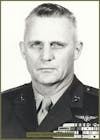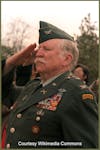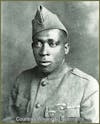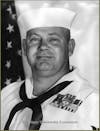US Marine Corps Lt Col Kenneth Walsh: From Enlisted Man to Medal of Honor Aviator
From his humble beginnings as a mechanic to his rise as a top fighter ace, Lt. Col. Walsh's journey is one of unwavering determination and exceptional bravery. Witness his daring missions in the Pacific Theater, where he face...
From his humble beginnings as a mechanic to his rise as a top fighter ace, Lt. Col. Walsh's journey is one of unwavering determination and exceptional bravery. Witness his daring missions in the Pacific Theater, where he faced overwhelming odds and turned the tide of battle. Discover the incredible acts of heroism that earned him the highest military honor.
Please visit our website to learn more about other American Heroes.
www.dutyandvalor.com
Sources:
wikipedia.org
pacificwrecks.com
nps.gov
cmohs.org
defense.gov
Thank you for listening to Duty & Valor!
Music by Amelie Leclerc. Artist's other music can be found here.
Please follow us on your favorite social media site.
Facebook
Instagram
Twitter
YouTube
Welcome back everyone. On today's episode of Duty & Valor, you’ll hear the story of a man whose love for flying saw him become a pilot while still an enlisted man. A man who helped shape air combat in an untested aircraft in the skies over the Pacific. A man who, on numerous occasions, faced overwhelming odds but came out victorious. This is the story of Medal of Honor recipient US Marine Corps Lt. Col. Kenneth Walsh.
Kenneth was born on November 24, 1916 in Brooklyn, NY to parents Ambrose and Irene Walsh. When he was only seven, his father died. After his death, his mom moved Kenneth and his sister Claire to Harrison, NJ., and it was after they moved there that Walsh developed a love for planes. He would ride his bike to Newark International Airport and spend hours on end watching the planes take off and land.
Not long after graduating from Dickinson High School in Jersey City, where he was a track star, Walsh enlisted in the Marine Corps at the age of 17.
He first served as an aircraft mechanic, but he wasn’t satisfied in this role. He wanted to fly those planes instead. At the time, enlisted men were allowed to become pilots, so he applied for and got accepted into flight training at Naval Air Station Pensacola in Florida. It was reported that he was still a Private when he earned his wings of gold on April 26th, 1937, but soon after was promoted to corporal.
Over the next four years, he served on multiple aircraft carriers where he flew scout-observation aircraft. In 1940, he married Beulah Mae, and they later had two sons named Kenneth Jr. and Thomas.
By the time the Japanese attacked American forces at Pearl Harbor on December 7th, 1941, Walsh was a master technical sergeant. In May of the following year he was promoted to Marine Gunner, which is equivalent to a warrant officer, and five months later he was commissioned as a second lieutenant.
Lt. Walsh arrived in the Pacific theater of WWII in January 1943 as a member of the Marine Fighter Attack Squadron VMF-124, known as the Wild Aces. Their squadron was the first to fly the F4U Corsair in combat. It was written that when the squadron first became operational, the pilots only had an average of 25 flying hours in this plane.
Inexperienced or not, the day after arriving, the squadron was flying combat missions, escorting Army and Navy bombers on bombing runs over the Solomon Islands. In an article by Commander Peter Mersky, he described “the Corsair’s first engagement as tentative”, and there were some Allied losses. But soon after, they had settled down and began to explore the superior performance of the Corsair.
On April 1st, 1943, Lt. Walsh scored his first aerial victories of the war, when he downed three Japanese aircraft that day. Six weeks later, on May 13th, he downed three more enemy aircraft, all three of them Japanese Zeros. With his aerial victory total now at six, Lt. Walsh became the first ace seated in a Corsair.
In the summer of 1943, Walsh was promoted to 1st lieutenant. By this time, his, and his squadron’s, prowess in the skies was growing. As the number of enemy aircraft downed by the Corsairs increased, the Americans gave the plane the nickname “Bent Wing Widow Maker”, while the Japanese called it the “Whistling Death”.
On August 10th, Lt. Walsh claimed his 10th, and probable 11th, aerial victory, earning him the title of double ace.
Five days later on August 15th, American forces were fighting to take over a small island in the Solomons when they encountered heavy Japanese bombing runs, slowing their advance. Though outnumbered 6 to 1, Lt. Walsh and the other men of the Wild Aces flew into enemy formation and ended their attack against the ground forces. During this engagement, Lt. Walsh’s Corsair took direct hits from 20mm cannon fire, but miraculously, he was able to safely fly the plane back to base, but it was now totally destroyed. That day, Lt. Walsh scored an additional three enemy kills, bringing his total of the war to thirteen.
On August 30th Lt. Walsh, and three other Corsairs, were tasked with escorting Army B-24 Liberators on bombing runs over the Japanese airfield at Kahili in Papua New Guinea. Prior to connecting with the bombers, the four Corsairs landed at a forward base in the Russell Islands.
And as the planes were being refueled, the men grabbed lunch.
It wasn’t long after the four pilots got their Corsairs in the air that Lt. Walsh’s engine began to sputter. While the other three Marine pilots continued on to rendezvous with the bombers, Lt. Walsh was forced to make an emergency landing on the small island of Munda.
Under normal conditions, this would have been the end of flying for the day, but this was wartime. Luckily for Lt. Walsh, the airfield at Munda had other Corsairs. The commander there, Major James Neefus, was a friend of Walsh’s and he let him take off with one of his aircraft.
Once in the air, Lt. Walsh continued on to Kahili, though he was not approaching it on the same heading as the other planes. As he neared the Japanese base, he spotted the B-24’s on their bombing runs while under heavy attack by Japanese planes. But what he didn’t spot were the fighter escorts.
Even though there were at least fifty Japanese Zeros attacking the bombers, Lt. Walsh flew into their formation alone. He had some success in disrupting their attacks on the bombers, and after some time passed, he was relieved to see several Corsairs join him in the fighting. Thankfully they arrived as he needed help the most. Though his plane had been hit and damaged, he was able to shoot down two Zeros. As the bombers completed their bombing runs, more Japanese aircraft took flight from Kahili. The number of Zeros in the air was so overwhelming that the B-24’s struggled to return home.
Lt. Walsh’s aircraft was hit again and he was forced to disengage, but not before he shot down two more Zeros. He was pursued by Japanese pilots, who were firing at him with their cannons and machine guns. He struggled to get away in his badly damaged plane when he was saved by a P-40 and several Corsair pilots.
Lt Walsh knew he couldn’t safely make an emergency landing at any allied airfield, so he chose to ditch his plane in the waters off Vella Lavella. Luckily for him, nearby Navy Seabees saw him go down. They borrowed a boat and made their way to him where they were able to safely pull him out of the water.
On that day, Lt. Walsh achieved his 20th aerial victory of the war.
Lt. Walsh returned to the US a few months later.
For his flying heroics on August 15th and 30th Lt. Kenneth Walsh earned the Medal of Honor, the first by a Corsair pilot. And on Feb. 8th, 1944, President Franklin D. Roosevelt bestowed the Medal of Honor upon him.
He was promoted to captain that same month, and he returned to the Pacific where he shot down a Japanese Zero over the skies of Okinawa in June 1945. This brought his aerial victory total to 21.
Walsh remained in the Marine Corps after the war and served during the Korean War where he flew the C-54 transport plane. He was promoted to Major in April 1955 and Lt. Colonel in October 1958, before retiring on February 1st, 1962.
After leaving the Marine Corps, Lt. Col. Walsh focused on his work with veteran’s groups and wrote for numerous military publications.
On July 30th, 1998 Lt. Col. Kenneth Walsh died at his home in Santa Ana, CA and is buried at the Arlington National Cemetery.
Lieutenant Colonel Kenneth Walsh wasn't just an aviator - he was a testament to courage and tenacity. From humble beginnings as a mechanic, he faced adversity to become a decorated pilot. He wasn't just a fighter ace. With nerves of steel, he was a guardian angel to allied aircrew. Lt. Col. Walsh's unwavering spirit reminds us that within each of us lies the potential for the extraordinary.
Thank you for listening to this episode of Duty & Valor. To read more about this week’s hero, check out the sources used in today's episode in our show notes and at dutyandvalor.com.
If you want to listen to our episodes early, we release new episodes on our YouTube channel of the same name on Fridays at 5pm. Also, on our channel we release daily YouTube shorts that highlight our Nation’s heroes, most of whom haven’t been featured on the show yet.
Be sure to like, follow, and share our episodes and please join us for our next episode, where we'll be sharing the inspiring story of another American hero who served with pride and lived with humility.




















